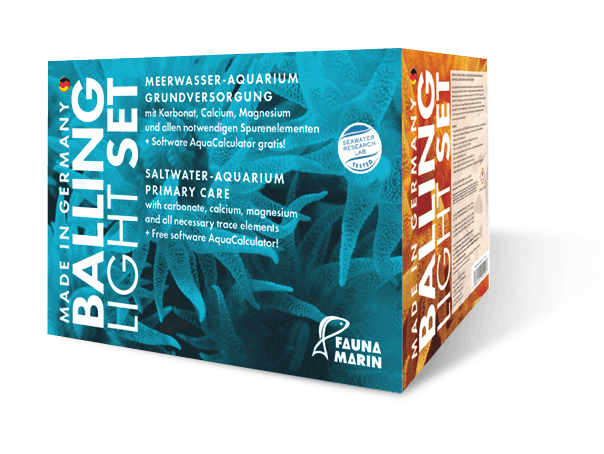CO2
Not only internal processes in the coral tissue are important for coral growth, but also the composition of the surrounding seawater. Special importance is is given to the CO2 contentration of the seawater and the resulting pH value, as well as the aragonite solution balance.
What’s that:
CO2 is a gas called carbon dioxide. Part of this gas turns into carbonic acid in water via H2CO3, which acidifies the water accordingly.CO2 is produced as a waste product during respiration, is formed by bacteria, and is carried into the water via the skimmer and the water surface, but is also discharged this way.
Problems:
Too high CO2 values indicate a too high input of CO2 into the water, but can also be an indicator for too high nutrient concentrations or a disturbed buffer system. This leads to disrupted coral growth and a dissolution of phosphates and trace elements from depots. Increased algae growth and undesirable coverings will be the consequence.
Measures:
Regular control of the pH-value, sufficient water current and aeration. Pay attention to the addition of carbonates.
Indicator species:
Too high CO2 levels are associated with disrupted coral growth, suddenly increasing nutrient levels and unexplainable algae growth.
Value too high:
Reducce supplementation e.g. calcium reactor or acids. Improve aeration of the aquarium environment, increase surface movement, use CO2 filters (Skim Breeze), improve skimming. Supply protein skimmer with fresh air. Check and adjust KH value.
Value too low:
Usually, this does not occur due to natural absorption. Possible degradation of CO2 filter.
| Variety | Water value |
|---|---|
| Benefits | Growth, signs of water stability |
| Reference value | 0,04–2,5 mg/l(0,26 US.liq.gal.) |
| Skill Level | red |
| Source | Carbonate salts, calcium supply, „all in one“ preparations, natural input, calcium reactors, carbon additions |
| Available | Balling Light KH MIX, Elementals KH |
| Importance 1–6 | 5 |
| Detection quality | safe |
| Relation values | Alkalinity – pH value |

Balling Light:
In the Balling Light system, there is usually no drastic change in CO2 concentration. However, if values should shift, make sure that the basic solutions are correctly adjusted. Otherwise follow the general instructions.
CO2 ARAGONITE SOLUTION EQUILIBRIUM
Growth of corals takes place in the tissue between polyps and skeleton, and it is achieved through specialized cells that form a matrix on which calcium is formed as aragonite crystals.
A supersaturated calcium solution is attached to these cells to facilitate the precipitation of calcium. Enzymatic activity ensures sufficient transport of calcium ions into the tissue and hydrogen ions out.
The dissolved carbon which is also required for this purpose is found in the tank water as CO2 bicarbonate and carbonate ions and thus forms the buffer system. Due to a higher CO2 input by calcium reactors or disproportionately high bacterial activity, the buffer system is stressed and the pH value decreases.
More CO2 causes a lower pH value and a decreasing concentration of carbonate ions, as the equilibrium shifts in favour of carbonic acid, i.e. bicarbonate and H+ ions, which leads to a decreasing saturation value for aragonite. At an aragonite saturation of 100 percent, aragonite is in equilibrium between dissolved and solid form. Unfortunately the correct ratio cannot be measured directly. Therefore, it is important not only to look at the laboratory values individually, but as a whole, and also to approach the necessary steps for optimizing as a whole
A too high CO2 concentration of the water also causes nutrients and minerals in depots to be dissolved. This process increases the growth of endolithic algae and skeletal cyanobacteria which has a detrimetal effect on the corals.
Tip:
For the stability of the water, the choice of skimmer and a sufficient flow are as important as a balanced calcium supply system like Balling Light. Besides the basics, the dosing of simple carbons should be as low as possible. Following these simple rules, you will rarely face problems with the pH value.